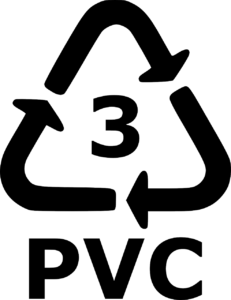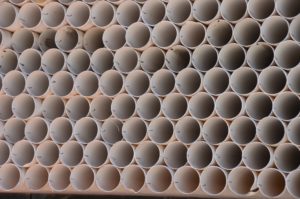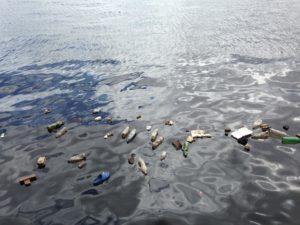Global recycling is dismal. Over 91% of plastic goes unrecycled annually. Despite decades of investment and intent, reduction, reuse, and recycling of most materials is just not working. It’s time we Rethink Reduce, Reuse, Recycle. CERMR’s work will focus its efforts on a sustainable recycling of all materials.
According to the EPA, only 8.4% of the collected plastics (~35.4 Million Tons) was recycled. The first 7 columns to the right represent the annual percentage of plastics recycled by type. From 1950 to 2015, there was 5.8 Billion Tonnes of primary plastic no longer in use. With only a 9% recycling rate, over 5.25 Billion Tonnes of plastic has been either landfilled, incinerated (12%), or is littering our land and water. These numbers reveal a shocking truth about the damage we are doing to our planet and what little help conventional recycling is providing.
The End of Life
Some Things Just Can't Be Recycled

PVC is one of the most commonly used plastics. However, due to the chlorine content of the plastic it cannot be recycled easily and its end of life is almost always in a landfill. When PVC is incinerated it creates harmful chemicals and byproducts. This dynamic results in landfills filled with pipe, carpet backing, cleaning supply jugs, pool liners, sheeting, auto fluid jugs, etc.


FR-HIPS, FR-ABS, FR-PC are just three of the main varieties of plastics used in electronics and industry. These plastics are set apart because of the halogenated flame retardants they include. These flame retardants are what keep the plastic from easily melting and igniting in flame due to the high temperatures of electronic equipment. In addition, the wiring used in most electronics includes a coating that is difficult to recycle. In some poorer nations internationally, both circuit board plastics and wiring are burned in open piles. This releases harmful toxins into the air, ground and water.


Although tires are currently recycled into some useful turfs and byproducts, only a small percentage are recycled. Many go to tire landfills which can create extremely dangerous and harmful tire fires. Tires contain a few percent of bromobutyl rubber as a liner to reduce air leakage through the tire walls and as tires are thermoset polymers the virgin rubber polymers cannot be recovered.
Our oceans are littered with plastics. Over 8 million tons of plastics make their way to our oceans each year. Composed of all seven types of plastics, this waste is contaminated with sodium chloride from ocean water. The majority of the waste recovered from the ocean in cleaning projects is landfilled.

Recycling Research Needed:
- Non-recyclable plastics
- Degraded ocean plastics
- Electronic scrap (e-scrap) boards and electronic plastics and removal of rare earth elements
- Tires, rubber, urethanes, and composites
- Renewable natural gas, composition and separation
- Green hydrogen and green ammonia
- Medical waste
- Municipal waste
- Biochar and biochar activation
- Railroad ties and telephone poles
